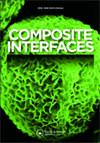陶瓷复合材料火花侵蚀加工效率、表征及优化技术综述
IF 2.4
4区 材料科学
Q3 MATERIALS SCIENCE, COMPOSITES
引用次数: 0
摘要
摘要近年来,材料科学领域取得了巨大的进步,特别是在冶金和陶瓷材料领域,以及在许多行业中使用的高可靠性,高性价比和经济有用的部件的生产。对于导电材料的轮廓和复杂形状的生产,电火花加工(EDM)是迄今为止最通用和最具成本效益的替代标准加工工艺。深入讨论和分析以下主题可能会发现在这篇综述论文研究。在这篇文献综述中,研究了表面形貌和加工性能,以确定机械、化学、电化学和热材料去除技术的影响。还涵盖了介电介质的不同特性。研究了非导电和导电陶瓷复合材料的性能特征、表面结构、机械和电气质量以及几何公差作为电极材料的函数。从复合材料的角度,对多种放电器件的性能指标和性能进行了比较和对比。根据复合材料的特点,对各种放电机的性能指标和特性进行了比较和对比,以确定它们的显著特性。人们正在对各种复杂的导电材料进行电火花加工研究,以探索它们对电火花加工的不可预测影响及其特殊应用。优化复合材料及其对电火花加工诸多方面影响的研究方法包括实验设计、方差分析(ANOVA)、响应面法、田口灰色关联分析等。利用x射线衍射(XRD)和能量色散x射线分析(EDAX)研究了各种复合材料的形貌,并利用各种算法研究了最新的优化策略。关键词:电火花金属去除机制、电火花导电陶瓷复合材料类型、算法、重铸层、表面形貌优化技术披露声明:作者声明,他们没有已知的竞争经济利益或个人关系,可能会影响本文所报道的工作。本文章由计算机程序翻译,如有差异,请以英文原文为准。
A review of spark erosion machining efficiency, characterization and optimization techniques for ceramic composites
ABSTRACTThe domain of material science has made great strides in recent years, especially in the fields of metallurgy and ceramic materials and the production of highly trustworthy, cost-effective and economically useful components for use in many industries. For the production of contours and intricate forms in conductive materials, Electrical Discharge Machining (EDM) is by far the most versatile and cost-effective alternative to standard machining processes. In-depth discussion and analysis of the following topics may be found throughout this review paper study. Surface topography and machining properties are investigated in this literature review to determine the impact of mechanical, chemical, electrochemical, and thermal material removal techniques. Different characteristics of dielectric mediums are also covered. Non-conductive and conductive ceramic composite performance characteristics, surfacetexture, mechanical and electrical qualities and geometrical tolerances are investigated as a function of electrode material. Through the perspective of composite materials, a variety of electrical discharge devices’ performance metrics and properties are compared and contrasted. The performance metrics and characteristics of a wide variety of electrical discharge machines are compared and contrasted in light of the composite materials in order to identify their distinguishing characteristics. EDM research is being conducted on a variety of sophisticated conductive materials, to explore their unpredictable effects on EDM and their specialized applications. Methods for optimizing the study of composite material and their effects on EDM’s numerous aspects include Design of Experiments, Analysis of Variance (ANOVA), Response Surface Methodology, Taguchi with Grey Relational Analysis, and so on. X-ray Diffraction (XRD) and Energy-Dispersive X-ray analysis (EDAX) are used to study the topography of a variety of composite materials and the latest optimization strategies are also investigated using a variety of algorithms.KEYWORDS: EDMmetal removal mechanismtypes of EDMconductive ceramic compositesalgorithmsrecast layersurface topographyoptimization techniques Disclosure statementThe authors declare that they have no known competing financial interests or personal relationships that could have appeared to influence the work reported in this paper.
求助全文
通过发布文献求助,成功后即可免费获取论文全文。
去求助
来源期刊

Composite Interfaces
工程技术-材料科学:复合
CiteScore
5.00
自引率
3.80%
发文量
58
审稿时长
3 months
期刊介绍:
Composite Interfaces publishes interdisciplinary scientific and engineering research articles on composite interfaces/interphases and their related phenomena. Presenting new concepts for the fundamental understanding of composite interface study, the journal balances interest in chemistry, physical properties, mechanical properties, molecular structures, characterization techniques and theories.
Composite Interfaces covers a wide range of topics including - but not restricted to:
-surface treatment of reinforcing fibers and fillers-
effect of interface structure on mechanical properties, physical properties, curing and rheology-
coupling agents-
synthesis of matrices designed to promote adhesion-
molecular and atomic characterization of interfaces-
interfacial morphology-
dynamic mechanical study of interphases-
interfacial compatibilization-
adsorption-
tribology-
composites with organic, inorganic and metallic materials-
composites applied to aerospace, automotive, appliances, electronics, construction, marine, optical and biomedical fields
 求助内容:
求助内容: 应助结果提醒方式:
应助结果提醒方式:


